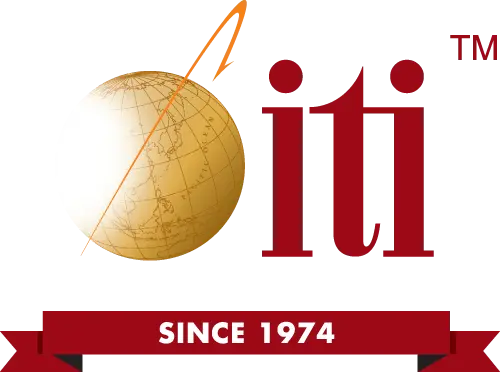
Dealing With Disruption: Supply Chain Risk Management
As the highest volume import country in the world, saying that the United States relies on global supply chains is an understatement. With this level of reliance comes risk, and lots of it. Manufacturing supply chains are arguably more volatile than ever today, exposed to potential disruptions around every corner. It’s no wonder that manufacturers, suppliers and buyers are concerned about supply chain risk management.
So how should they manage today’s supply chain disruptions?
Let’s answer that question first by identifying the most common causes of supply chain disruptions. Then we’ll discuss managing through an active disruption and offer our expert suggestions on applying supply chain risk management concepts to prepare for and defend against disruptions before they occur.
What Causes Disruptions?
Modern global supply chain disruptions can stem from any number of technical, natural and economic upsets, including:
- Human and system errors such as accidents, equipment failures, delays, logistics issues, quality concerns and intentional sabotage.
- Efficiency variances such as poor equipment performance, raw material variation and poor management operations.
- Geopolitical shifts such as trade policy changes, political unrest, conflict, government transitions, labor shortages and trade imbalances.
- Natural disasters such as earthquakes, tsunamis, wildfires and long-range climate change impacts.
- Digital exploits such as cyberattacks, digital terrorism, data breaches, payment diversion, corporate identity impersonation and digital espionage.
Strategies for Dealing With Supply Chain Disruptions
Managing through a looming or current disruption can be a nightmare, especially when it occurs without warning. From our experience, containing a supply chain disruption necessitates quick, intentional action.
We suggest taking these five steps:
1. Gain visibility.
Immediate visibility into a disruption is paramount. At the cusp of an emerging issue, first seek to gather information on the extent, severity and current state of the situation. This information should give you sufficient perspective for subsequent decisions. Depending on the type of disruption, shoot for at least two points of corroborating feedback such as manufacturer reports, GPS logistics tracking, inspection photos, physical inventory checks, local government announcements or weather reports.
2. Perform tactical assessment.
With wide visibility and verified data in hand, you can assess your options. Supply chain risk management will involve financial, contractual, insurance and public customer opinion components. Short of an imminent life and safety hazard, take the time to assess the disruption with all components in mind, balancing impacts against delaying decisions waiting for better options (which may never come).
3. Take informed action.
Now that you have a strong understanding of the disruption at hand, it’s time to act. Divert inventory, queue up secondary suppliers, swap deliveries between clients, acquire substitutions or simply halt processes until the disruption clears. Whatever resolution must be set in motion, it must happen quickly, with clear intent, and unilaterally across your leadership. Often disruption-driven action involves accounting, operations, sales and legal teams, so aligning and then moving as a cohesive unit is imperative.
4. Coordinate customer communication.
Once action is in motion, communicate impacts to outside stakeholders, most notably customers. Solve for a soft landing while still being a responsible steward of your customers’ interest. Delivery delays, cost changes, quality differences and recalls are prime topics to broadcast as clearly and quickly as possible, accompanied by your commitment to see the matter through resolution. Keep in mind that word travels fast through unofficial channels, and your window of time to notify your customers might be very tight against social media and word of mouth.
5. Enforce commercial instruments.
With the hard part addressed, you must maintain momentum and enforce any contractual, insurance and third-party resolution instruments right away. If the disruption is a matter of legal liability, restitution is heavily dependent on quantifying damages in real time. If the disruption is a matter of insurance coverage without legal fault, claims should begin right away for the same reason but with more focus on mobilizing claim auditors. And if the disruption is purely a performance shortfall, contract and warranty enforcement processes need to start, not waiting to “see how things turn out” as often happens.
Hedging Against Future Disruptions
Industrial manufacturing is a tough business, fraught with risks that scale to the size of your supply chain and beyond. There is no way to entirely avoid risk when dealing with global supply chains, but there are definite ways to protect against categorical risk, such as:
Balancing inventories.
If we think of a supply chain as the sum of many small steps that occur sequentially, we can visualize that if one step suffers a disruption, the downstream steps can all be impacted. Inventory is especially at risk due to knockdown effects like this. For example, if a product shipment from Asia were to be delayed one month in transit, would you have enough domestic inventory built up to avoid running out? With the potential for these types of disruptions facing the industry today, we recommend balancing inventories a bit more liberally than in years past, building up volumes at critical raw material, finished goods and domestic distribution points.
Adding redundancy and critical diversification.
Once inventory volumes are bolstered, next examine the need for redundancy; that is, look for secondary and even tertiary resources at key risk points that may be otherwise susceptible to disruption. From a purely business standpoint, the days of assuming that any single point in a global supply chain can be completely reliable are over. Setting up multiple raw material suppliers, standby manufacturers, separate primary and secondary processors, logistics vendors, logistics routes and even financial institutions will add beneficial diversification to your supply chain. Should one link in the chain fail, you’ll have options to sidestep a major disruption entirely.
Reinforce technology and infrastructure.
Being able to know what we don’t know is actually possible today thanks to modern technology. Software solutions can now predict, forecast, simulate and preempt supply chain disruptions with incredible accuracy. Hardware solutions can provide eyes, ears and minds directly into supply chain points in real time, used in such cases as status monitoring of a production line overseas or measuring the air temperature around your products in a warehouse across the state.
Prepare and exercise operational plans.
Being caught by an emergent, unpredictable supply chain disruption is no one’s fault, but being caught without a recovery plan and trained staff is unwise. For robust supply chain risk management, buyers must have reaction plans prepared well in advance, and must exercise those plans routinely so that all internal staff and external resources know precisely how to handle a supply chain upset. Ideally, this preparation effort will include offshore manufacturers, third party logistics and necessary regulatory agencies so that the plan represents realistic activities on their parts.
Resize the piggy bank.
During a disruption, cash flows are often turned upside down. You have to expect accelerated spending, frozen payments, declining accounts receivable and new large outlays needed to activate contingency resources. To further reinforce your supply chain risk management position, financial capacity must be reevaluated knowing that potential disruptions could happen. Consider:
- An increase in insurance coverage.
- Placing contingency funds in accessible bonds.
- Increasing working capital thresholds.
- Opening additional lines of credit.
Stay Ahead With Supply Chain Risk Management
Committing the time to frame up a supply chain risk management plan may seem burdensome, but it only takes one sudden disruption for this plan to pay for itself. It might even save your business from fatal losses. Understanding all of the potential disruption types that exist on the horizon is a crucial first step in formulating such a plan. We hope these insights will at least expand your awareness on supply chain risk management so your organization won’t be caught unprepared.
With approaching 50 years of experience executing entire order lifecycles from ideation to final delivery, we are here to help customers discover, qualify, engage and manage manufacturing solutions across the globe. For more information or to discuss your project, please contact our U.S. headquarters via phone at (281) 242-7030 or online here.






